If you’re going to the UK capital and are wondering how to use London buses, this guide shares everything you need to know. The city’s iconic red buses are one of the best ways to travel between sites – and you can even see many of the sights from the top deck! Fares are very affordable, too.
Whether you want to get from A to B or would like to take a scenic trip across London on a budget, there’s a bus route with your name on it. Transport for London (TfL) is responsible for London buses. There are literally hundreds of routes – and thousands of stops.
Which might sound confusing – but every bus stop should have a map showing all the stops each route calling there will make. This makes life easier when you’re on the go. You can also find routes, top up your Oyster card, track progress, and more via useful transport apps and websites.
Travelling by bus is a great way to see London. All buses are zero or low emissions, too, meaning you’re also doing your bit for the planet. According to TfL, 95% of London residents live 400 metres or less from a bus stop, so there should always be one nearby.
London buses are clean, eco-friendly, efficient, and cheap. They’re also one of the city’s best known sights. What’s not to love?
Buses are also the most accessible form of public transport in London, offering low level entry, wheelchair ramps, and dedicated disabled spaces on board. You can even plan journeys via the TfL Go app’s step-free mode.
Read on for all you need to know about travelling by bus in London. Even at night…
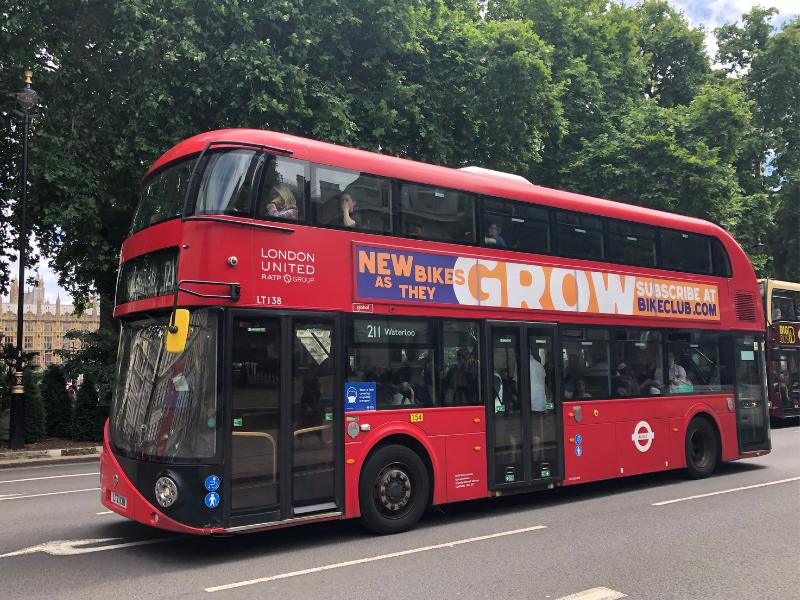
How to Use London Buses | Step by Step

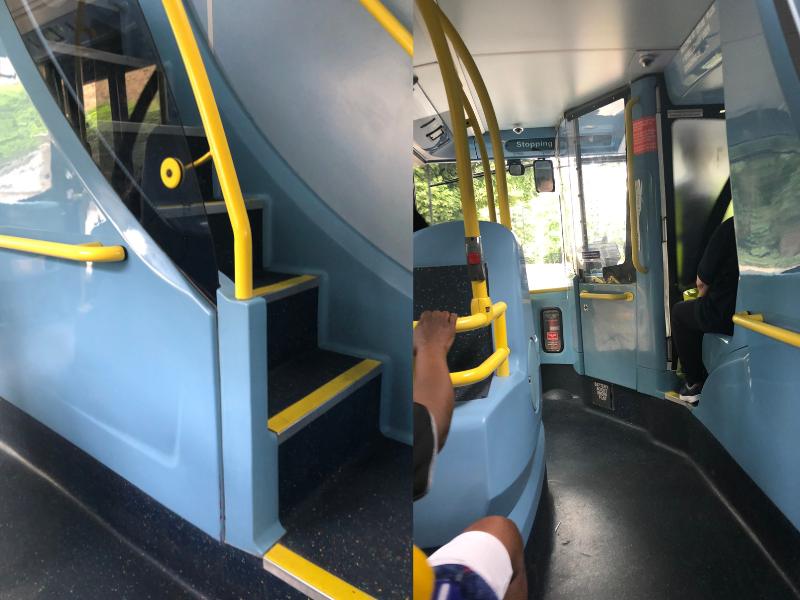
- Choose your route
The first thing you need to do is work out which bus will take you from A to B. You can use TfL’s Journey Planner to help with this. Also useful is the TfL Go app, which offers live timetables, interactive maps, and more.
- Find a bus stop
You can only board a bus at a designated stop. Each stop should display the numbers of the buses that will stop there. A route map should also be available, so you can check the stops each route will make. Some stops have digital boards showing when the next bus is due.
- Stop the bus
It’s important to make sure the driver can see you, or they may not stop so you can get on the bus! When they do stop, make sure you let any passengers off first, before getting on. If the bus is full, it may not be possible to board, in the interests of keeping everyone safe.
- Board the bus and touch in
Once you get onto the bus, you’ll need to touch in. You can do this via contactless payments on a card or device. Alternatively, get a Visitor Oyster Card and preload this before boarding to pay your fare.
- Getting off the bus
Screens inside the bus will show the next stop. This will also be announced on board. Before the bus stops, ring the bell: this tells the driver you want to alight at the next stop. You can find these on the metal pillars on the bus.
Unlike with the tube, you don’t need to touch out when using a tram or bus in London.
London Bus Fares
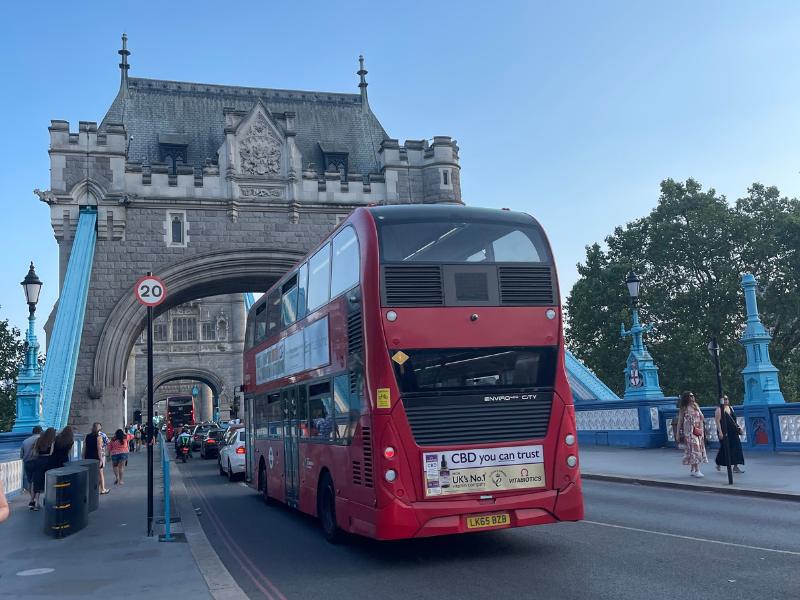
Payment methods
You can only pay for London bus travel with an Oyster Card or contactless. Cash is not accepted.
Hopper Fare
Touch in with your contactless card or device or an Oyster Card, and you’ll automatically get the Hopper fare. This is currently £1.75, and covers any bus or tram trips taken within an hour of touching in.
Daily Fare Cap
Even if you travel all day, the daily cap means that it will cost you a maximum of £5.25. You must use the same payment method each time to qualify.
Night Buses in London
If you want to travel between 11 pm and 6 am, then the London night bus network might cover your route. All night bus route numbers begin with an “N”.
Trafalgar Square is something of a night bus hub, with many services departing from or arriving here. A number of night buses also operate to and from Oxford Circus, as well as other stops across the city.
Whether you want to get to Barnet in the north, Brixton to the south, Walthamstow in the east or Ealing Broadway to the west, there’s probably a night bus you can catch.
This TfL night bus map shows all the routes.
London Bus Apps
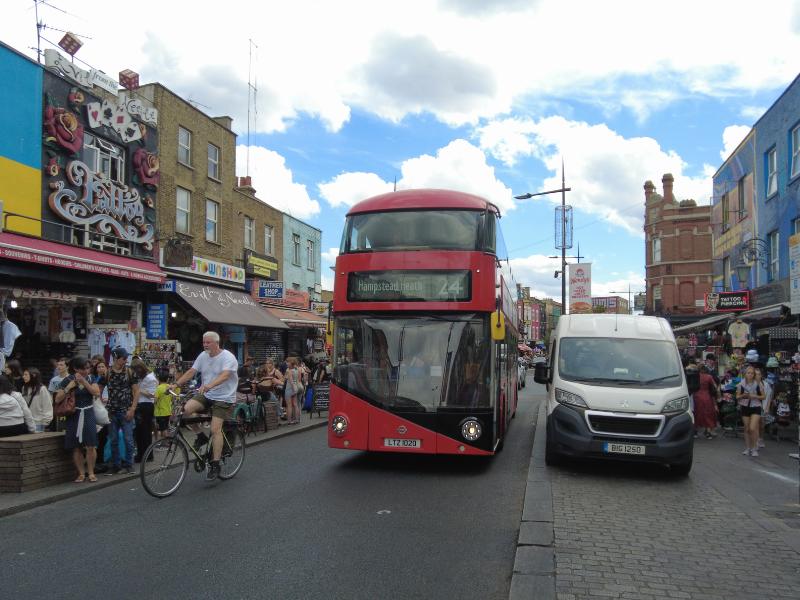
TfL Go
The TfL Go app from Transport for London has so many uses. You can use an interactive map, get live bus times, and even plan accessible travel by using the step-free mode.
TfL Oyster and contactless app
Also from Transport for London is the TfL Oyster and contactless app. You can top up your Visitor Oyster card here, so you can pay upfront for bus travel in London.
If you want to, you can also purchase a weekly, monthly or annual Bus and Tram Pass via this app.
London Bus Pal
This free London bus app can track buses on the go, even in seconds. It accounts for delays caused by traffic jams or inclement weather, and can give you an accurate idea of when a bus will arrive or depart.
The London Bus Pal app can also display buses for any given stop.
Citymapper
The Citymapper app can help you plan journeys by bus, see live timings, and even share journey details with family and friends.
Other Useful Information
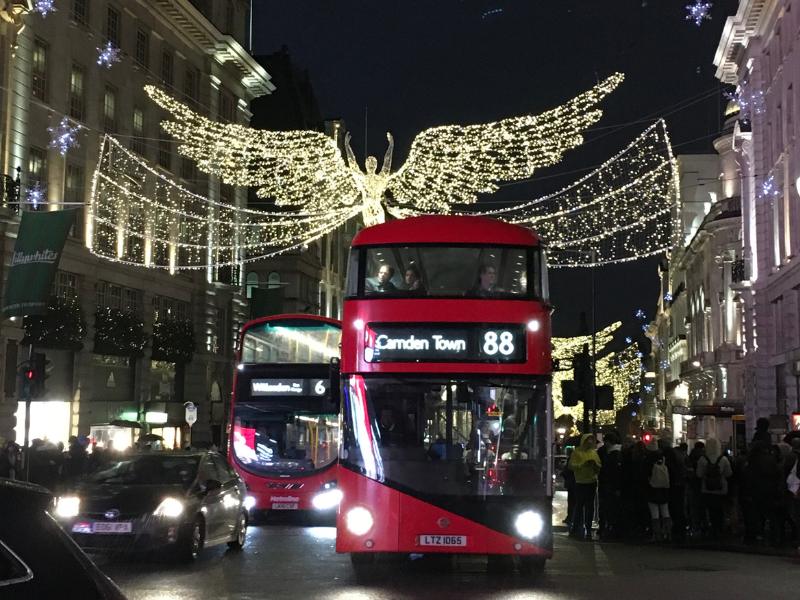
Accessibility
Ramps are provided for those using a mobility scooter or wheelchair. The buses also have low-level entry to make them more accessible. Wheelchair and scooter spaces can also be found on board each bus.
The TfL Go app can help you plan accessible trips when you use the step-free mode.
Priority seating
Priority seats are clearly labelled. If you sit in one, you should be prepared to offer it if someone else needs it more than you.
Touch in only
To pay the correct fare on a London bus, you’ll need to touch in at the yellow reader when boarding. Unlike the underground, there’s no need to touch out when using trams or buses.
The 3 Best London Bus Routes for Tourists
If you want to take an affordable, scenic trip in London, then look no further than these three journeys! All are standard routes operated by TfL, and use modern Routemaster buses. So you can save money while seeing the sights – and travelling like a real-life Londoner.
Route 9 | Alwych – Hammersmith
- Route highlights: Alwych – Piccadilly – Knightsbridge – Kensington – Hammersmith
- Sights: Trafalgar Square, Regent Street, Green Park, Hyde Park, Harrods, Royal Albert Hall, Kensington Gardens, Kensington High Street, Holland Park
- Link: Route 9
Board a Route 9 bus and you can enjoy a plethora of riches. The bus travels between Aldwych and Hammersmith, via some of London’s most upmarket areas.
En route, the bus passes Charing Cross station – the official centre of London – before moving on to nearby Trafalgar Square. Next, look out for Regent Street and Piccadilly Circus, before Green Park and Hyde Park.
The bus then passes the iconic department store Harrods in Knightsbridge, before taking in the Royal Albert Hall, Kensington Gardens, and Kensington High Street. You can also see Holland Park before the route ends in Hammersmith: look out for peacocks and the Japanese Garden.
Route 24 | Pimlico – Hampstead Heath
- Route highlights: Pimlico – Victoria – Westminster – Camden – Hampstead Heath
- Sights: Westminster Abbey, St James’s Park, Downing Street, Trafalgar Square, Theatreland, Camden Market
- Link: Route 24
Take a trip on a route 24 bus to see a broad range of London life. The route commences in Pimlico, close to the Thames, or you could board it in Victoria.
A list of big-hitting sights is then yours to enjoy – see Westminster Cathedral, Westminster Abbey, Whitehall, Downing Street, and Trafalgar Square in quick succession. Theatreland is next up, including Tin Pan Alley and its music shops – officially called Denmark Street.
The bus then heads north, stopping off in Camden Town. This district is known for its alternative, boho vibe, and is home to one of London’s most famous markets and Regent’s Canal. Spacious Hampstead Heath is the final stop, and the perfect way to escape the city.
Route 26 | Hackney Wick – Westminster Cathedral or Victoria
- Route highlights: Hackney Wick – Shoreditch High Street – St Paul’s Cathedral – Trafalgar Square – Westminster Abbey – Westminster Cathedral or Victoria
- Sights: St Paul’s Churchyard, Chancery Lane, Royal Courts of Justice, Horse Guards Parade, Parliament Square, St James’s Park
- Link: Route 26
Though route 26 commences at St Mary of Eton Church in Hackney Wick, you could also board it in Hoxton or Shoreditch in East London. It then travels to Liverpool Street and Bank in the City of London – the financial heart of the UK – before calling at St Paul’s Churchyard and Cathedral.
Next you’ll pass historic Chancery Lane and the Royal Courts of Justice, followed by Trafalgar Square and Whitehall. Here you can look out for the famous Horse Guards Parade.
Route 26 then continues to Parliament Square, Westminster Abbey, and St James’s Park, before ending at either Westminster Cathedral or Victoria Station.
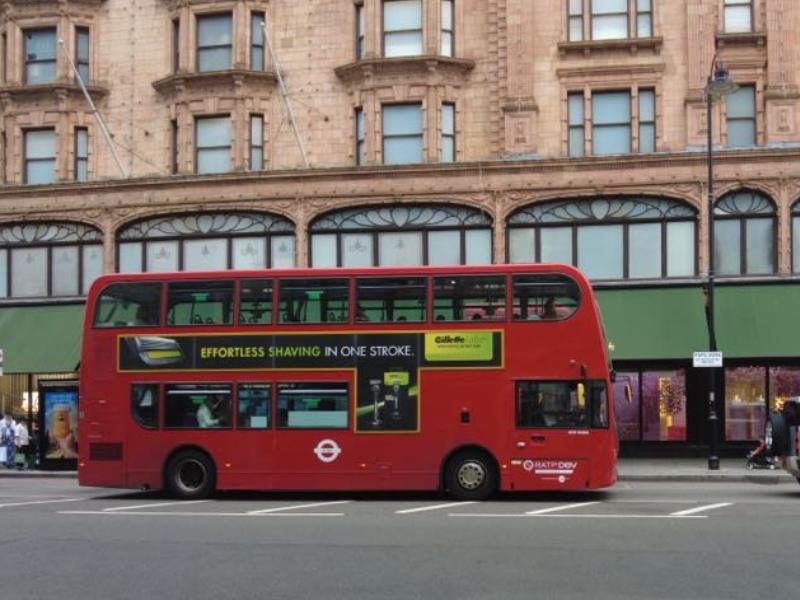
Which London Buses Will You Use?
If you want a cheap, reliable, clean, accessible, and iconic way to get around London, then it’s hard to beat London buses. With around 8,000 of these bright red double-decker vehicles serving more than 19,000 stops via 700 or so routes, there’s bound to be a stop close to wherever you’re staying.
With options including a straightforward journey from A to B, a sightseeing journey on a budget, and a night bus to get back after dark, where will your London bus trip be taking you?
